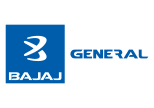Defence Pension Scheme in Indian Army
The Defence Pension Scheme holds immense importance in providing financial security to serving personnel and retired veterans of the Indian Army. As brave individuals dedicate their lives to protecting the nation's sovereignty, it becomes crucial to ensure their well-being even after their service concludes. The Defence Pension Scheme, a government initiative, is designed to honour the sacrifices and contributions of armed forces personnel by offering a comprehensive pension scheme.
Table of Contents
What is the Defence Pension Scheme?
The Defence Pension Scheme is a testament to the government's commitment to recognising and rewarding the dedication and sacrifices of armed forces personnel. It is a comprehensive initiative aimed at providing financial assistance and pension benefits to the personnel of the Indian Army. The Ministry of Defence manages this scheme in conjunction with the Controller General of Defence Accounts.

Eligibility Criteria for Defence Pension Scheme
- Regular Army Personnel: The Defence Pension Scheme is primarily available to regular Army personnel, including commissioned officers, junior commissioned officers (JCOs), and other ranks. It also extends to personnel from the Army Medical Corps, Army Dental Corps, and Military Nursing Service, recognising the diverse contributions made by individuals serving in different roles within the armed forces.
To be eligible for the Defence Pension Scheme, individuals must have rendered pensionable service. Pensionable service refers to the service period during which individuals contribute to the pension fund, and upon completion, they become eligible for pension benefits.
- Service Requirements: To qualify for a service pension, individuals must complete a minimum period of service. The qualifying service period varies based on the rank and type of personnel. Generally, commissioned officers require a minimum of 20 years of service, while JCOs and other ranks need to complete a minimum of 15 years of service.
For disability pension, there is no minimum service requirement. Personnel who are disabled in service, attributable to or aggravated by military service, are eligible for disability benefits.
Types of Pensions under the Defence Pension Scheme:
The various types of pensions under the Defence Pension Scheme are:
- Service Pension: Service pension is a fundamental component of the Defence Pension Scheme. It is granted to individuals upon completion of the qualifying service period. The pension amount is calculated based on factors such as rank, length of service, and the average emoluments earned during the last few years of service. This pension acts as a recognition of the meritorious service rendered by armed forces personnel throughout their careers.
The average emoluments are determined based on the last 10 months average pay drawn by the individual. The pension amount is a percentage of the average emoluments, which varies depending on the rank and length of service. The pension is subject to periodic revisions as per government orders.
- Disability Pension: Armed forces personnel who are disabled in service, whether attributable to or aggravated by military service, are eligible for disability pension. The disability pension is determined based on the percentage of disability as assessed by the medical authorities.
A medical board determines the disability percentage constituted for the purpose. The disability pension is calculated as a percentage of the last drawn pay and is granted for life. The rates for disability pension vary depending on the rank and the extent of disability.
- Family Pension: The family pension component of the Defence Pension Scheme acknowledges the immense sacrifices made by armed forces personnel and extends support to their families. The family pension is granted to the eligible family members of deceased soldiers. It aims to provide financial assistance to the family after the demise of the serving or retired personnel. The family pension is calculated as a percentage of the last drawn pay and is provided to the spouse, children, and dependent parents, ensuring their well-being.
The family pension is payable for life or until the eligible family member's remarriage or death, per government rules. The rates for family pensions vary depending on the rank and the time period of service rendered by the deceased personnel.
- Commutation of Pension:
The Defence Pension Scheme also offers the provision of commutation of pension. Commutation allows individuals to convert a portion of their pension into a lump sum payment. The commuted amount is deducted from the monthly pension for a specific period, after which the full pension is restored. This feature enables individuals to meet immediate financial requirements, such as acquiring assets or settling outstanding obligations.
The commutation factor used to calculate the commuted value depends on the individual's age at the time of commutation. The maximum limit for commutation is 40% of the pension, subject to government rules and regulations.
Calculation of Pension
The calculation of pension under the Defence Pension Scheme involves a systematic approach that ensures fairness and accuracy. The pension amount is determined based on factors such as rank, length of service, and qualifying service of the individual. It also takes into account the average payments earned during the last few years of service, providing a balanced and appropriate pension structure.
The average emoluments are calculated by taking the average of the last 10 months' pay drawn by the individual. The pension amount is a percentage of the average payments, depending on the rank and length of service. The percentage of pension increases with the length of service, reaching a maximum after a certain number of years.
Process of Availing of Defence Pension:
Here is a step-by-step process for availing of the Defence Pension Scheme:
- Filling and Submission of Pension-related Forms: To initiate the pension process, individuals are required to fill out the necessary pension-related forms, including the pension claim form. These forms capture vital information such as personal details, service particulars, and bank account details for pension payments. Accuracy and completeness of information are crucial to avoid any delays or discrepancies in the pension disbursement process.
- Verification and Documentation Process: The filled forms and the required documents are submitted to the concerned authorities for verification and documentation. This process ensures the authenticity of the information provided and helps establish individuals' eligibility for pension benefits. The documents typically include the discharge certificate, medical board proceedings (in case of disability pension), and other relevant records that validate the service and entitlements.
The verification process is carried out by the Pension Sanctioning Authorities, which may include Record Offices, Pension Payment Offices, or other designated authorities. These authorities verify the service and entitlement details before sanctioning the pension.
- Pension Payment through Designated Banks: Upon completion of the verification process, the pension is sanctioned and paid through designated banks. The pension payment is usually credited to the individual's bank account on a monthly basis. Designated banks play a crucial role in facilitating seamless and timely pension disbursement, ensuring that armed forces personnel and their families receive the financial support they deserve.
The pension payment is regulated by the Defence Pension Disbursing Offices (DPDOs) or Public Sector Banks (PSBs) appointed by the government. Individuals have the option to choose the bank through which they want to receive their pension.
Conclusion
The Defence Pension Scheme stands as a pillar of support, ensuring the financial well-being of serving personnel and retired veterans of the Indian Army. This comprehensive guide has provided an in-depth understanding of the scheme, including its features, eligibility criteria, types of pensions, calculation methods, and the process of availing it.
Frequently Asked Questions (FAQs):
- How is the pension amount calculated for Defence personnel?
The pension amount for Defence personnel is calculated based on factors such as rank, length of service, and average emoluments earned during the last few years of service. It is determined by applying a percentage to the average emoluments.
- Can family members of deceased soldiers receive pensions?
Yes, family members of deceased soldiers are eligible for the family pension. The family pension provides financial assistance to eligible family members, including the spouse, children, and dependent parents.
- What is the process for commutation of pension?
The process of commutation of pension involves converting a portion of the pension into a lump sum payment. The commuted amount is deducted from the monthly pension for a specific period, after which the full pension is restored.
- Are there any tax benefits associated with Defence pensions?
Defence pensions are eligible for certain tax benefits. The Income Tax Act governs the income tax rules and exemptions applicable to pensions and are subject to change from time to time.
- How can one update their bank details for pension payments?
Individuals can update their bank details for pension payments by submitting a written request to the concerned pension disbursing authority. This request should include the updated bank account details along with the necessary supporting documents, such as a cancelled cheque or bank statement.
- Is there any provision for medical benefits under the Defence Pension Scheme?
Yes, the Defence Pension Scheme provides certain medical benefits to pensioners and their eligible family members. These benefits include access to military hospitals, health insurance schemes, and medical facilities provided by the government.
Also Read:




























